How Does a Self-Inflating Sleeping Pad / Mat Work? We Have the Answers!
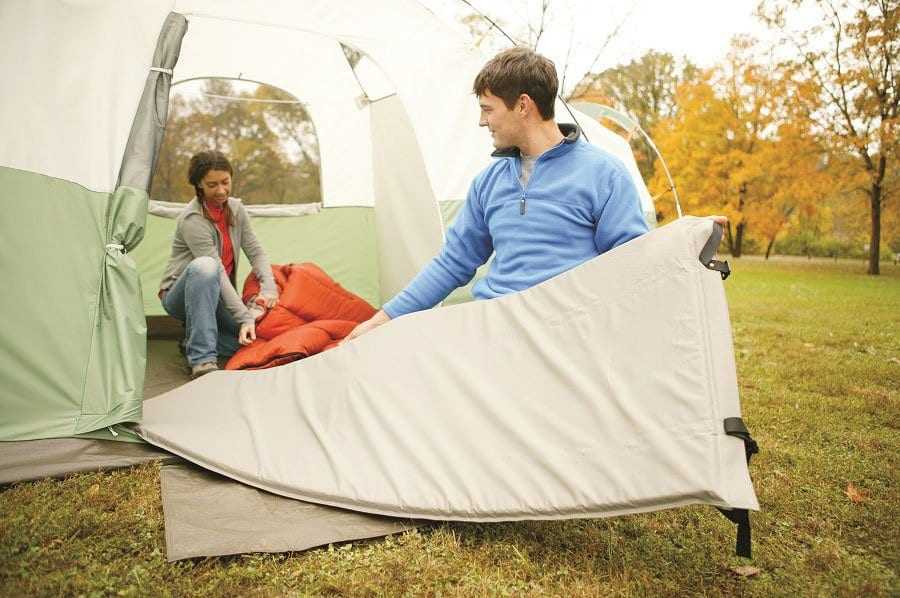
Self-inflating sleeping pads are the ideal companion for campers, due to many reasons: they do most of the work for you, are compact and easy to store or travel with, and most importantly, they are comfortable. Have you ever been camping with the family and, while unrolling your sleeping pad, wondered: Exactly how does a self-inflating sleeping pad work?
You are not the only one. A lot of people are unsure of how exactly a self-inflating sleeping mat works. Sadly, this also restrains them from buying the perfect sleeping pad for their needs. In this article, we at KAMUI will do our best to answer any questions you might have about how a self-inflating sleeping pad works.

What Is A Self-Inflating Sleeping Pad?
The sleeping pad is a simple but ingenious design, offering a cushion between yourself and the hard or cold ground. A self-inflating sleeping pad is similar to an air mattress. However, this invention was engineered for the outdoors.
Another category that falls under the foam pad domain is a self-inflating sleeping pad. This type of sleeping pad has built-in mechanisms that cause it to inflate itself automatically. Today’s engineering gave us the miniature in size, weight, and portability of a mattress that does not require a power source to inflate it.
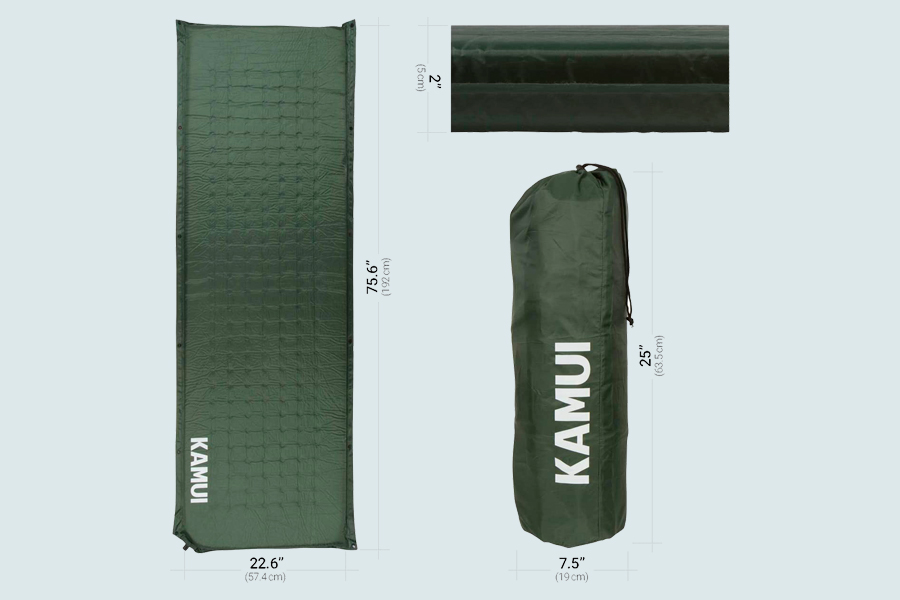
A self-inflating sleeping pad offers campers a good night’s sleep. It provides similar amenities to an air mattress, including insulation and comfort, in a much smaller and more convenient package.
How Does A Self-inflating Sleeping Pad Work?
While traveling, an inflating sleeping pad should be tightly rolled up into its storage bag. Only when you’re ready for sleeping or setting up camp and open the valve will it expand to a full-size mat that fits underneath your sleeping bag.
The self-inflating sleeping pad can inflate on its own, since it has a specific type of foam inside it. This type of foam has open cells. This means, when you roll it up and keep it in its storage bag the foam compresses entirely, and all the air exits the cells. When you take the pad out, unroll it, and open the air valve, you expand this layer of foam. Once you open the valve, air enters the inside of the pad, filling up the cells. As a result, the air will gradually flow inside the foam sleeping pad, allowing the pad to inflate itself.
Most self-inflating pads demand adding a few manual breaths yourself before using it. This activity helps the sleeping pad reach its optimum firmness. Once your sleeping pad is full of air, don’t forget to close the valve.
How Long Does it Take for a Self-Inflating Sleeping Pad to Inflate?
Inflation time varies between different brands and styles of self-inflating sleeping pads. Generally, a sleeping pad takes between 15 and 30 minutes to self-inflate.
The self-inflating feature allows you to lay your inflatable pad out wherever you need it, open the valve, and walk away until it’s full. The pad does all the work for you. When you’ve returned from setting up camp or enjoying some s’mores off the campfire, the pad should be almost fully inflated. All you need to do now is give it a few more quick breaths to top it off, close the valve, and you’ll be ready for a great night’s sleep.
How do I Deflate a Self-Inflating Mattress?
Deflating your self-inflating mattress is quite simple, but it will take more effort than the inflating step does.
First, you’ll have to unscrew the pad’s valve.
Next, start to roll the pad and push the air out of it towards the valve. It is essential that you start from the bottom or the side opposite of the valve so that all the air can exit the pad undisturbed. Once you’ve rolled your elf inflating pad all the way up, and it’s fully deflated, close the valve.
At this point, you will unroll your mat once again with the valve closed and roll it up again very tightly. This will create a pocket of air at the top of the mat, where the valve is.
For the last step, unscrew the valve and let that air out of the pad. After that, you’re finished and need to tighten the valve back up.
Now you’re ready to break camp and head home.
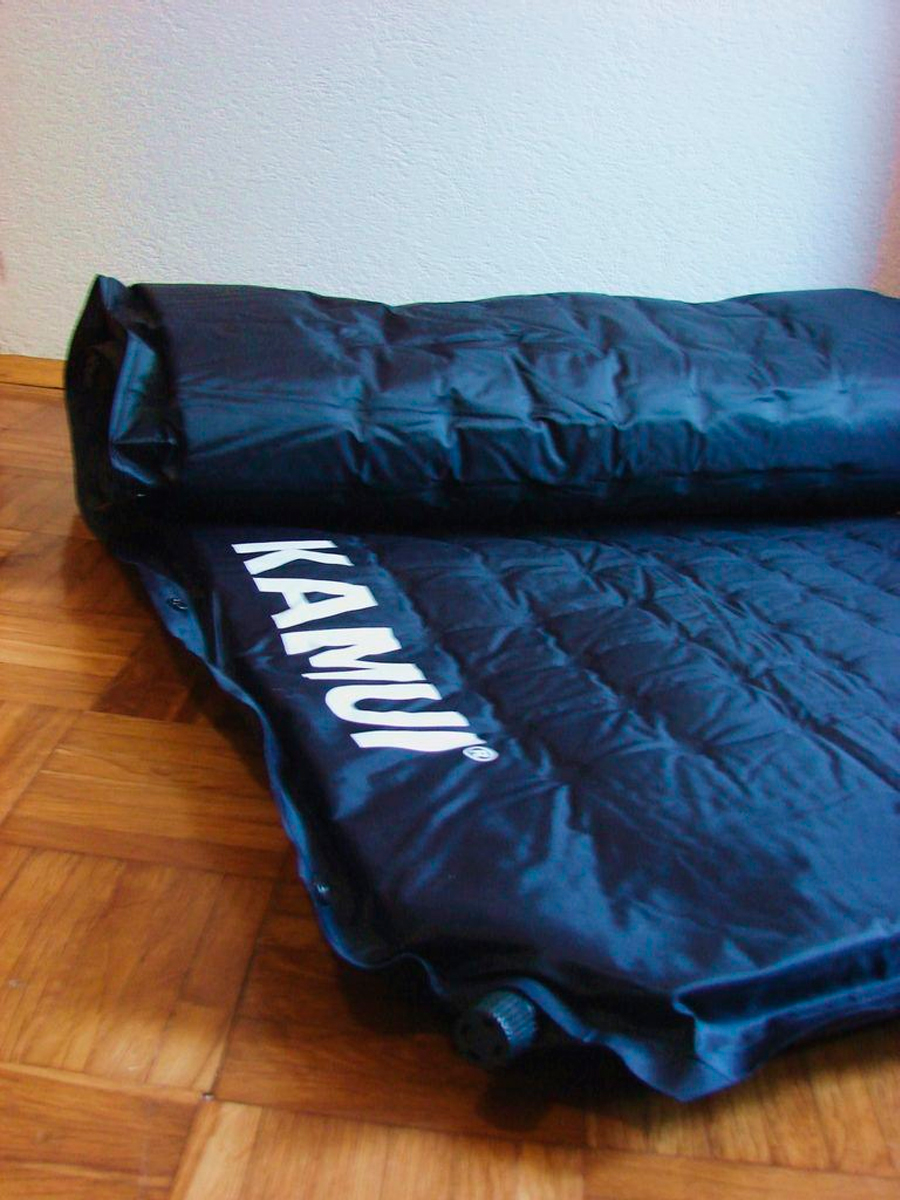
What Materials do we use In A Self-Inflating Pad?
Every sleeping pad is made differently, but most will contain a combination of four standard materials. These materials will give your pad a comfortable feeling, light weight, and be durable for outdoor conditions.
Inner Core Foam
Open-cell foam is the primary material that most manufacturers use to make the insulation of self-inflating sleeping pads. This type of foam consists of cells that aren’t entirely encapsulated and are deliberately left open, making this type of foam easy to compress.
Outer fabric of the sleeping pad
- Polyvinyl Chloride: Polyvinyl Chloride, or PVC, is a widely produced synthetic plastic polymer. We use PVC in two different forms, rigid and flexible. Both forms are durable, lightweight, and strong. We use both for lining the outside layers of a camping mats
- Thermoplastic Polyurethane: We consider this material to be the perfect combination of plastic and rubber. Thermoplastic Polyurethane is rubber-like in flexibility and durability. However, it falls into the category of plastic. Sometimes we use this material for manufacturing sleeping pads.
- Heavy Duty Polyester Fabric: Polyester fabrics are strong and often water-resistant, if not waterproof. This makes them the perfect outer layer for your sleeping pad. It’s durable and easy to keep clean.
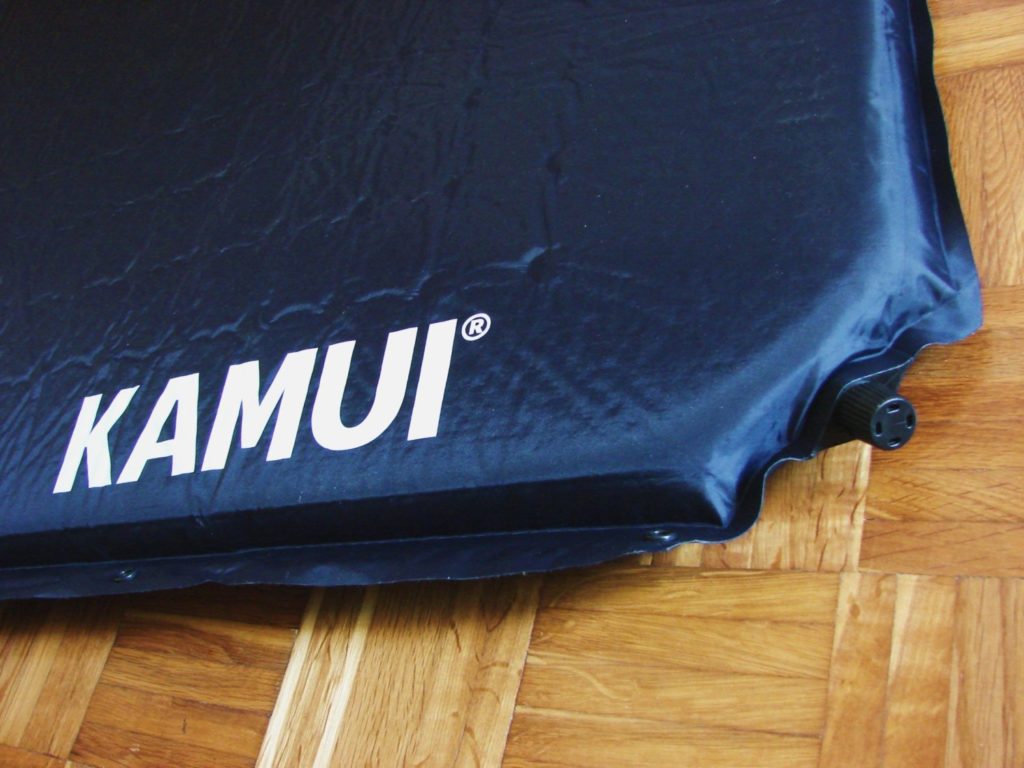
What Kind of Sleeping Pad Should I Get?
After you have educated yourself on the theme of how does a self-inflating sleeping pad work, you might want to think about what type of sleeping pad to get for yourself. This decision depends entirely on what you’re hoping to accomplish with your sleeping pad. There are three main types of self inflating mattresses, and these are:
Closed-cell foam pads
These pads are the original or an old school type of sleeping pads used by campers and backpackers everywhere. These pads require no setup – you unfold it, and you’re ready to go. They will require the least amount of setup and be easy to clean, but they will also provide the least amount of insulation and comfort.
Air sleeping pads
Manually inflated air sleeping pads tend to take up the least amount of space, making them great for backpacking. However, they do require some extra lung power to set up and make a lot of noise when using.
Self-inflating sleeping pads
A self-inflating sleeping pad is often the most comfortable while also requiring the least amount of setup. Unfortunately, most self-inflating sleeping pads are bulkier, making them the best choice for camping near your car. One self-inflating sleeping pad we can definitely recommend is the KAMUI Self-Inflating sleeping pad, specifically made for tents and family camping.
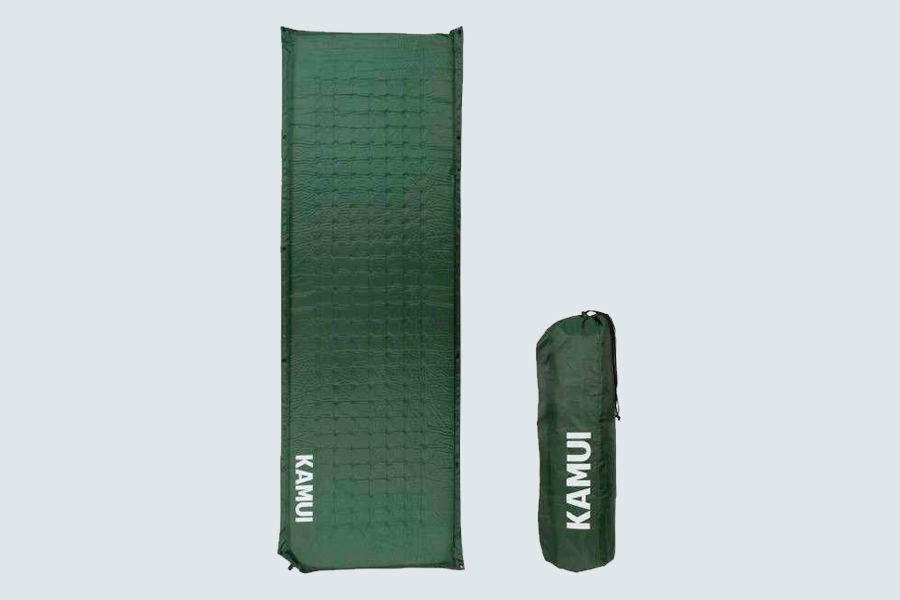
The Benefits Of A Self-Inflating Sleeping Pad
With the ever-changing and improving technology, new products are made available to the outdoor community on a regular basis. With comfort, packability, and durability at the forefront of these improvements, it’s no surprise that there have been some serious advancements in the sector of sleeping pads.
- Portability
- Convenience
- Comfort
- Size
What Can I Use A Self-Inflating Sleeping Pad For?
The most obvious and frequent use of a self-inflating sleeping pad is for camping. The good news is that they can serve multiple purposes if you let them. We can use them for:
- Spare Mattress
- Travel Mattress
- Seat Cushion
- Backpacking
- Camping

FAQ
The short answer is: Yes, a sleeping pad is necessary for any camping trip. Sometimes, it can be challenging to keep your body temperature up when lying on the ground because the soil draws the heat from your body. Without a sleeping pad, you’ll lack critical insulation from low temperatures even if you’re camping during the summer months.
Every sleeping pad has something called R-value. R-value relates to an object’s thermal resistance or its ability to prevent the thermal transfer from one object to another. Sleeping pad R-values range from about 2 to 8. The higher the R-value, the greater the insulating power of your sleeping pad.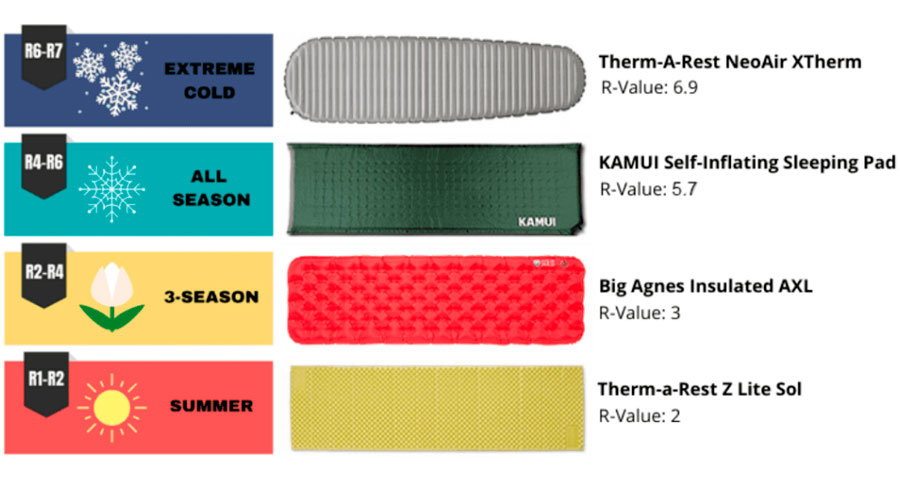
To answer this question, you first need to know how does a self-inflating sleeping pad work. Self-inflating sleeping pads have a naturally high R-value, contrary to some air or closed foam mattresses. This is because a self-inflating sleeping pad combines open-cell foam and air.
Additionally, you can stack sleeping pads onto each other to increase their R-value. Some self-inflating sleeping pads are designed with snaps or buttons along the sides so that they can connect to other sleeping pads. If you stack your sleeping pads on top of one another and secure them with the snaps, you’ll improve the insulation of your sleeping space while making sure the pads don’t slide away. 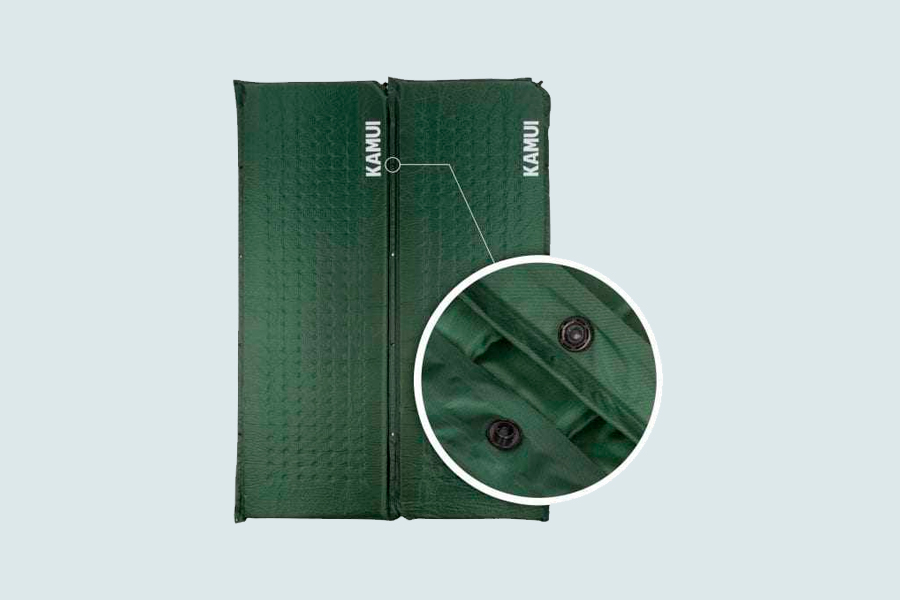
Once you acquire a self-inflating sleeping pad, and know How does a self inflating Sleeping Pad work, make sure you take good care of it. Assure you wash it once every season and don’t forget to store it safely at home. The best way to store it is unrolled, and with an open valve. The valve should always be positioned upwards so that the moisture inside the sleeping pad can escape.
Conclusion
The more time you spend outside, while camping, hiking, or backpacking, the more gear you will need. Although most of this gear can last you a lifetime, it’s always beneficial to upgrade and update it.
A self-inflating sleeping pad is one of those products that can change the way you camp and add comfort and convenience to your camping routine. This absolutely essential camping accessory is the piece of gear you always needed.
Knowing how does a self-inflating sleeping pad work can benefit one by showing them the up-to-date technology of this sleep system and innovative ideas that offer improvements in the outdoor world.
Resources:
The Comfort Zone and Personal Growth
Open Cell vs Closed Cell Foam: Which Should I Choose?
Comprehensive Guide on Polyvinyl Chloride (PVC)
How to Store a Sleeping Pad
How to Compress an inflatable Sleeping Pad
What is TPU?How do self inflating sleeping mats work?




